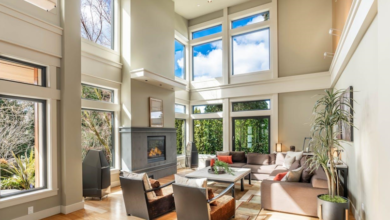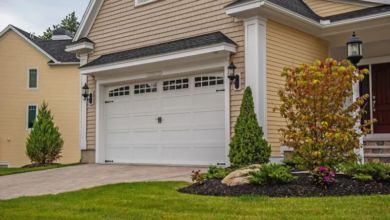Permitted Development Rights: What You Can Build Without Planning Permission

When you’re thinking about extending your home in London, the first question is usually about Planning Permission. Does your project need it? How long will it take? But here’s something many homeowners don’t realize: some projects don’t need Planning Permission at all. They fall under something called Permitted Development rights.
Understanding what qualifies for Permitted Development, or learning which projects can actually proceed without planning permission, changes your timeline and approach completely. If you want to know more about how Permitted Development rules work, or understand when Building Regulations approval is still required even without Planning Permission, you’ll see why knowing this distinction matters.
Extension Architecture works with Permitted Development projects regularly, and they’ve learned what actually qualifies and what people mistakenly think qualifies.
What Permitted Development Actually Means
Permitted Development is a planning concept that lets certain types of building work happen without getting Planning Permission from the council. The government decided some developments are minor enough that they don’t need planning approval.
The idea is that if work is small enough or specific enough, it doesn’t impact the neighborhood character or planning concerns. So they created rules allowing it.
But here’s the catch: Permitted Development doesn’t mean you can do whatever you want. There are strict rules about what qualifies. There are size limits. There are restrictions based on where your property is located.
Just because something would be nice to have doesn’t mean it qualifies as Permitted Development.
Loft Conversions and Permitted Development
This is where Permitted Development gets really useful for London homeowners. Most loft conversions fall under permitted development rights.
You can convert your loft into a room or rooms without needing Planning Permission. The work still needs Building Regulations approval. The work still needs to follow all the technical requirements. But the Planning Permission step gets skipped.
This saves months. Planning Permission applications take time. They can take 8 to 12 weeks or longer. Skipping that step means your project moves faster.
But not all loft conversions qualify. If your house is in a Conservation Area, the rules change. If your property is listed, the rules change. If you’re converting a flat in a building with communal roof space, it gets complicated.
That’s where Extension Architecture comes in. They know the rules. They know your specific situation. They know whether your loft conversion actually qualifies.
Single Storey Extensions and Permitted Development
Single storey extensions sometimes qualify for Permitted Development. But there are strict limits.
The extension can’t be more than 4 meters deep. It can’t go beyond a certain percentage of your original garden area. It can’t have a pitched roof extending beyond a certain height. The list of restrictions is long.
Your property also matters. If you’re in a Conservation Area or have a listed building, different rules apply. If your house is on a corner plot, different rules apply.
A single storey extension that looks small might still not qualify if it exceeds one of these technical requirements. Conversely, an extension that seems like it should need permission might actually qualify.
Double Storey Extensions and Permitted Development
Here’s the thing: double storey extensions almost never qualify for Permitted Development. They’re too visually prominent. They change the appearance of your property too much.
Double storey usually means Planning Permission is required. There’s no way around it. You design it. You submit it. You wait for council decision.
This is one reason why double storey extensions take longer than loft conversions. Planning Permission adds months to the timeline.
Common Misconceptions About Permitted Development
People get confused about Permitted Development regularly. They think they can build something because they’ve heard about Permitted Development rights. Then they start work and discover they actually need Planning Permission.
One common misconception: if it’s a small project, it’s Permitted Development. Not true. Size is one factor but there are other factors too.
Another misconception: Building Regulations approval means Planning Permission isn’t needed. Not true. These are separate. You might need Building Regulations approval without needing Planning Permission. You might need Planning Permission without needing Building Regulations. You might need both.
Another misconception: if your neighbor did it without permission, you can too. Not true. Just because someone got away with something doesn’t mean it’s legal. Different properties have different rights.
See also: Affordable Light Filtering Curtain Options for Homeowners
Building Regulations Still Applies
Here’s something people miss: even if your project qualifies for Permitted Development and doesn’t need Planning Permission, it still needs Building Regulations approval.
Building Regulations are about safety and standards. They’re separate from planning concerns. You can’t skip them.
So a loft conversion that qualifies for Permitted Development still needs Building Regulations inspection. Electrical work needs inspecting. Structural work needs inspecting. Final completion needs inspecting.
This still costs money and takes time. But it’s usually faster than going through both Planning Permission and Building Regulations.
Conservation Areas and Listed Buildings
London has lots of Conservation Areas and grade 2 listed buildings. If your property is in a Conservation Area, Permitted Development rights are often more restricted.
Loft conversions still usually qualify. But single storey extensions might not. The rules are stricter because the council wants to protect the character of the area.
If your building is listed, Permitted Development rights get really restricted. Almost everything needs consent. You’re not getting the benefit of skipping Planning Permission.
An Extension Architecture architect knows your specific situation. They know whether your property is listed or in a Conservation Area. They know what that means for your project.
How Extension Architecture Navigates This
This is where specialist knowledge matters. Not every contractor understands Permitted Development rules in detail. They might think something needs Planning Permission when it actually qualifies. Or vice versa.
Extension Architecture knows the rules. They look at your property. They look at your proposed project. They determine what actually applies.
Then they manage the approvals process accordingly. If it qualifies for Permitted Development, they handle Building Regulations. If it needs Planning Permission, they submit it and guide you through the process.
Timeline Impact
Permitted Development projects move faster because Planning Permission gets skipped. A loft conversion under Permitted Development might take 3 to 4 months total from start to finish.
The same loft conversion that requires Planning Permission might take 6 to 8 months or longer. The Planning Permission process adds months.
This is huge for homeowners who want to get work done and move back into their homes.
Getting It Right From The Start
The biggest mistake is starting work assuming something qualifies for Permitted Development when it actually doesn’t. Then the council shows up. Work stops. You’re in trouble.
That’s why getting professional advice upfront matters. Extension Architecture looks at your situation. Gives you clear guidance on what’s required. Then you proceed confidently knowing you’re following the rules.





